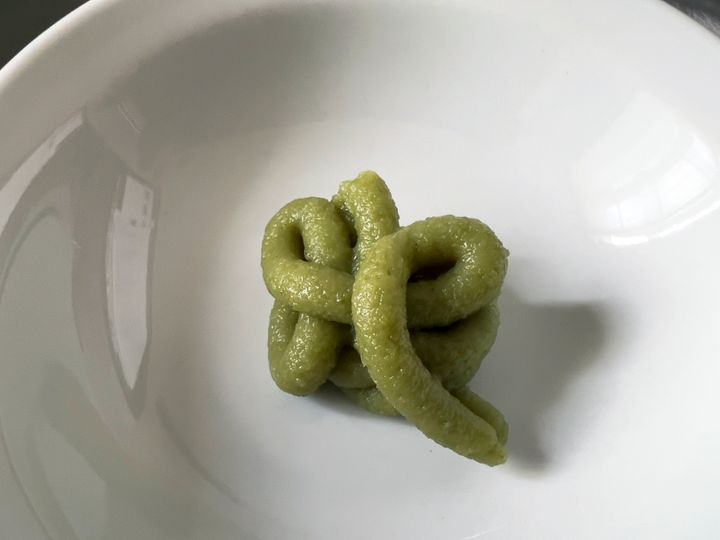
Some food facts are fun. For instance, did you know you can get blue, vanilla-flavoured bananas? Cool!
Others, however, seem to only exist in order to upset my sense of reality. Maybe you never knew that the specks on the outside of strawberries aren’t actually seeds (you can I have probably never seen a real strawberry seed).
And you also might not have heard that most wasabi in restaurants isn’t wasabi at all.
What?
I know! The wasabi that most of us know and love has such a distinctive flavour, colour, and taste that it feels impossible to imagine subbing it out.
However, almost all wasabi in the UK (and the US, and almost everywhere really) is actually horseradish mixed with firey mustard and food colouring.
It makes a sort of sense once you recover from the shock, horror, and betrayal. After all, horseradish is from the same family that wasabi belongs to (brassicas). It has a similar firey flavour that mustard enhances, so much so that wasabi is sometimes known as Japanese horseradish.
The rhizomes of both plants share isothiocyanates, flavour compounds that give both their warming taste ― though horseradish is reportedly sweeter and hotter than the combo you’re used to.
Wait, so ― why?
Well, money. Real, wild wasabi needs to be grown under constantly running water and is very hard to cultivate in bulk, so it’s pricey to buy.
In fact, the more of the stuff you grow at once, the more likely it is to become diseased. Read: £££ ― a 42g tube of true wasabi paste can set you back £4.50, while a fresh 65g-80g rhizome costs just under £32.
That’s not necessarily unreasonable, given how tricky the plant is to cultivate. But it does mean that when restaurants have actually gotten their hands on the good stuff, they’re likely to show it off ― often by grating it right by your dinner plate at the table. That’s when it tastes its best, apparently (not that I’d know!).
However, if you were to, say, knock up a cheaper, horseradish-based alternative, you might want to quietly place it on a plate and keep it moving.
None of which is to say that fake wasabi is bad (whatever the stuff usually that comes with my sushi is made from, it definitely goes brilliantly with the food). But it does mean that now, I’m itching to try the real thing ― anyone want to chip in?
Catch a video on the topic here: